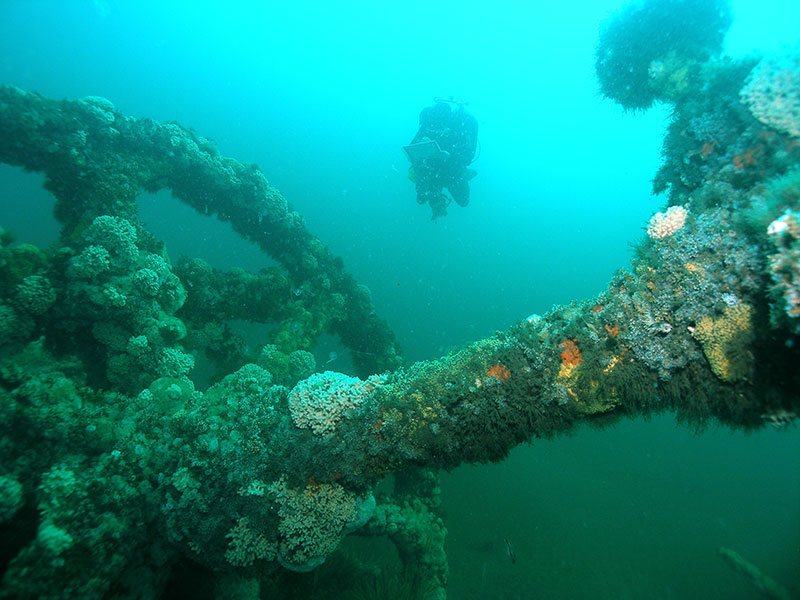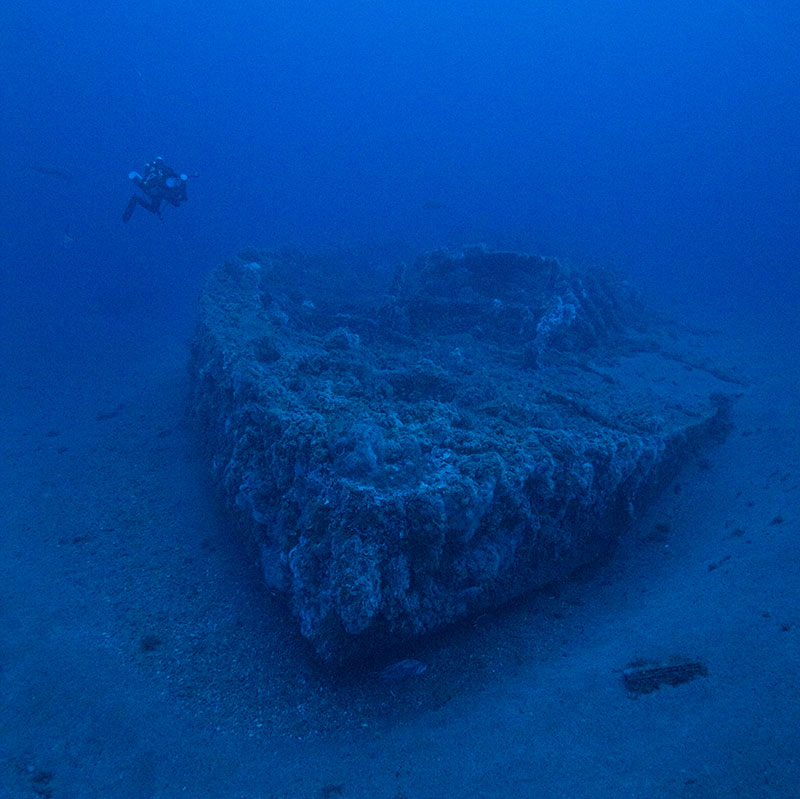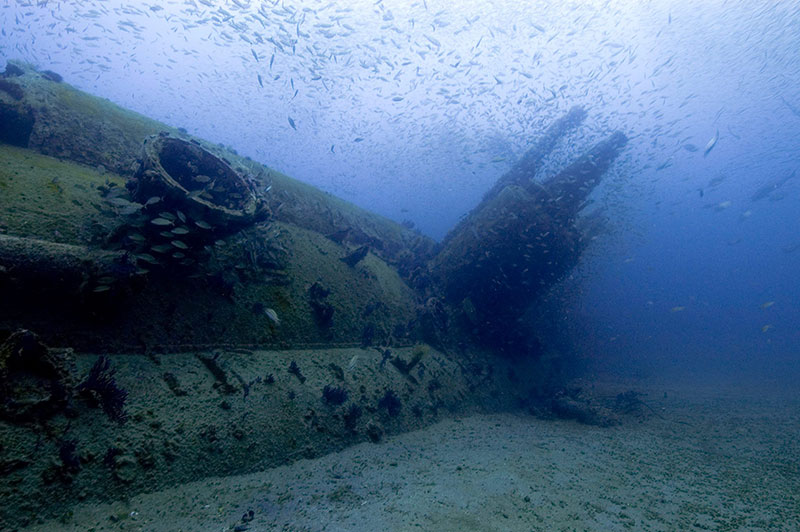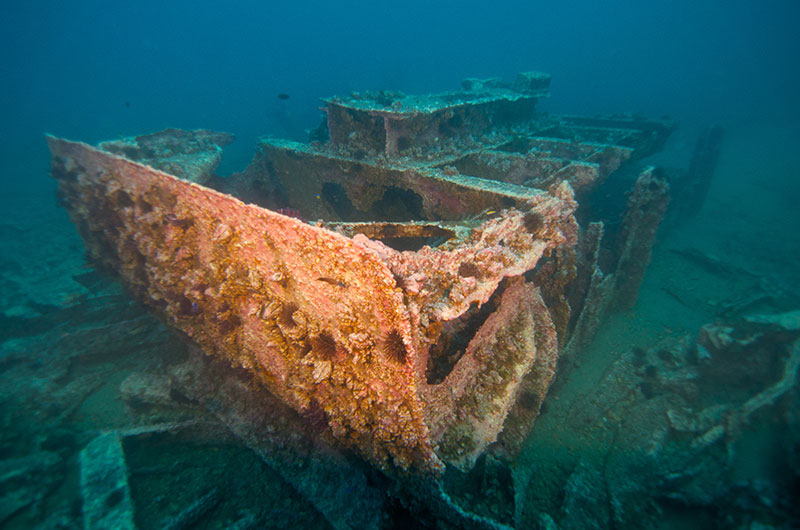
by Joseph Hoyt, NOAA Office of National Marine Sanctuaries

Merchant ship City of Atlanta sank in January 1942, when torpedoed by a German submarine, U-123. The World War II wreck provides habitat for marine life, as seen here on the stern section of the shipwreck. Image courtesy of Doug Kesling/NOAA. Download image (jpg, 5.7 MB).
There is perhaps no greater potential for archaeological discoveries in U.S. waters than along the Eastern Seaboard. This region has been host to human activity since before the Last Glacial Maximum, when the shoreline approximated what is now the continental shelf, the bottomlands themselves once homes, hunting grounds, and sacred places. The prospect of identifying indigenous sites in this area has long filled archaeologists and living native descendants with hope.
Much later, the mid-Atlantic was the first chapter in the colonization of North America. By the mid- to late-sixteenth century, European colonists began to establish settlements along the East Coast, bringing people, trade, and ships that have left an indelible mark on the region and that would quite literally change the world.

Civil War ironclad USS Monitor sank off Cape Hatteras, North Carolina, during a storm on December 31, 1862. Discovered in 1973, the wreck site became out nation’s first national marine sanctuary on January 30, 1975. Image courtesy of NOAA. Download image (jpg, 7.6 MB).
Over the centuries between, there has been a steady stream of maritime commerce on these waters, connecting emerging East Coast population centers to each other and to the rest of the planet. As coastwise and transatlantic commerce and industry grew, innovations in ships kept apace, shifting from sail to steam and from wood to iron and steel. Countless ships of every style and configuration plied these waters, and many, through fate and circumstance, still lie on the seabed today. These sites have stories to tell, teaching us about the men and women who lived through these times and what their worlds were like.
This area has also been a consistent field of conflict from the American Revolution all the way up to the mid-twentieth century during World War II. Just a few miles from the operating area of this expedition lie the remains of one of the most famous ships in U.S. Naval history, the USS Monitor. This iconic Union ironclad built during the American Civil War was a new generation of warship, famously clashing with the CSS Virginia and signaling the end of the wooden navy.

U-352, a German U-boat, sank on May 9, 1942, when U.S. Coast Guard Cutter Icarus dropped depth charges off the North Carolina coast. Today, an abundance of sea life teems on the wreck site. Image courtesy of Tane Casserley/NOAA. Download image (jpg, 2.8 MB).
During the global conflicts of the twentieth century, the Atlantic coast was a terrifying gauntlet of submarine warfare. During World War I, German U-boats hunted merchant ships just off North American shores, sinking several ships, striking both fear and resolve into merchant mariners. A few short decades later, this threat would return on a far more massive scale.
From January until mid-July of 1942, German U-boats sunk hundreds of merchant vessels and allied warships off the East Coast of the United States, often within sight of shore. World War II’s Battle of the Atlantic opened an ‘American Theatre’ that resulted in the loss of thousands of lives and countless stories of heroism and sacrifice. Again, these stories are told by the remnants left behind. Discovering these connections to our past forces us to shine a light on events that in many cases were lost in the noise of war and gives us an opportunity to honor our past and contextualize our current world.
This expedition aboard NOAA Ship Okeanos Explorer affords a rare opportunity to search the seabed for these connections to our past. What could we find? A ballast pile? A small coastal trader? A paddle wheel steamer? A massive steel oil tanker? All are possibilities, and all have the potential to focus our attention on a forgotten piece of our shared heritage.

Lost on April 7, 1942, during World War II’s Battle of the Atlantic off North Carolina’s coast, the tanker British Splendour lies as a reminder of how close the war came to American shores. Image courtesy of Joe Hoyt/NOAA. Download image (jpg, 8.1 MB).